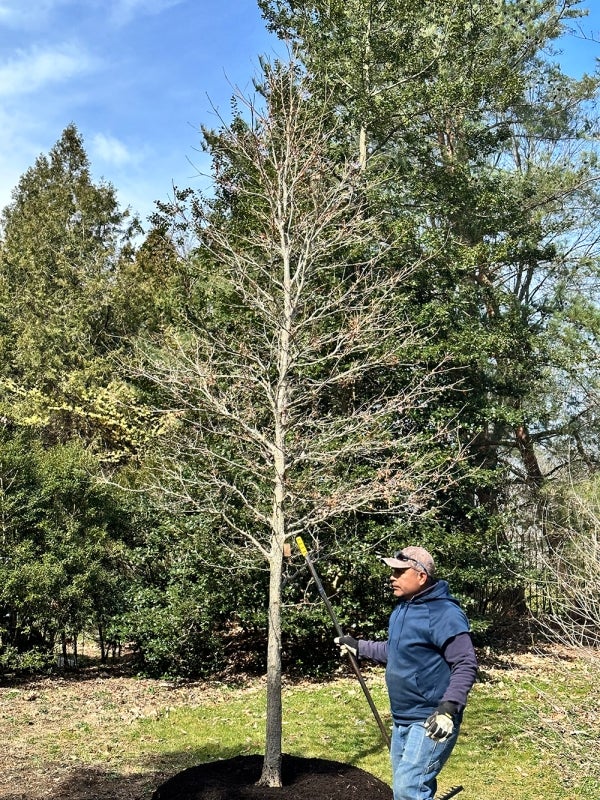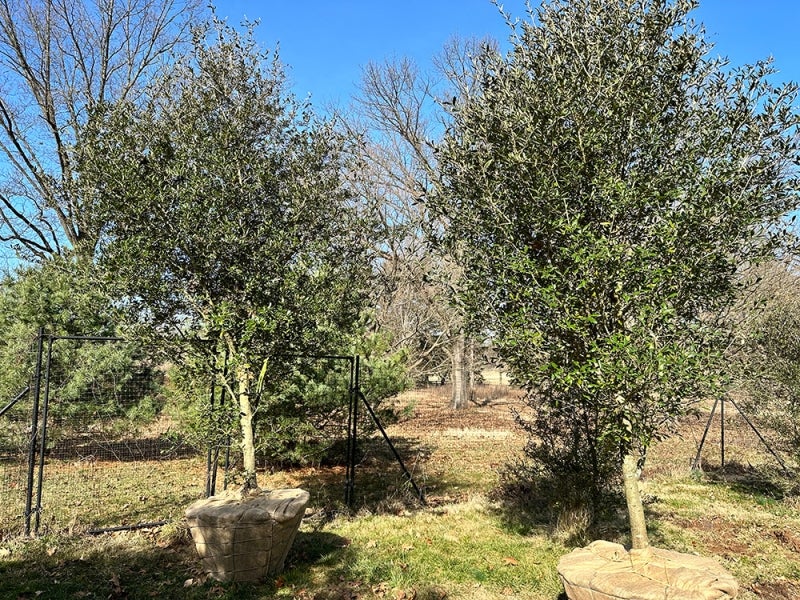Blog

Thinking Ahead of Climate Change
If you've been outside recently, you've most likely noticed that early spring blooms are popping up much earlier than usual. Daffodils, red buds, and even cherry blossoms are beginning to bloom with this year's warm winter weather. Last week, Billy Penn at WHYY published the piece, "Flowers and trees are blooming super early in Philly after a warmer-than-usual winter," featuring Vince Marrocco, Director of Horticulture at the Morris Arboretum. “It’s normal February activity — if you live in South Carolina,” says Vince in the piece.

Credit: Bill Cullina, F. Otto Haas Executive Director
While the warmer winters in Philadelphia may not be normal in 2023, it could be normalized sooner than we think, and the Arboretum has been actively thinking ahead of climate change for over a decade.
Just this week we planted a Compton oak (Quercus x Comptoniae), a hybrid between live oak (Q. virginiana) and overcup oak (Q. lyrata), which was collected as an acorn on a Southeast VA trip by the Morris Arboretum and Arnold Arboretum in October 2012 and has been growing in our nursery since. The main purpose of this trip was to collect seeds from live oaks on the northeastern limit of their natural range with the hope that these trees that could eventually be planted in Southeastern PA. Most current climate models show our area having a similar climate to present day Richmond, VA , Charleston, SC, or even further south, where live oaks grow naturally. The Compton oak, being a hybrid of two southern species, has the advantage of hybrid vigor and even possibly greater adaptability than its parents: overcup oak tolerates wet, compacted soils and live oak tolerates dry soils.
"When the Arboretum collects new plants to grow, the quest now reaches to the Carolinas and Georgia – even as far south as Texas. 'Those are areas you wouldn’t traditionally think are home to suitable plants for the Mid-Atlantic area, but temperatures are changing and the plants that want to grow here are changing,' Marrocco said."- Billy Penn at WHYY.

Credit: Bill Cullina, F. Otto Haas Executive Director
The Arboretum also grew about fifty live oak seedlings from the same 2012 trip. They were transplanted to our field nursery in 2015 and evaluated for growth form and winter hardiness. Some of these live oaks suffered winter dieback, but we kept three and transplanted them to either side of the intersection of Northwestern Avenue and Stenton Avenue. Fifteen additional live oaks were dug from our nursery and shared with the Penn Campus Arboretum, Longwood Gardens, Laurel Hill Cemetery, and Greenwood Cemetery. This sharing will allow us to evaluate long-term performance under different weather conditions in the Mid-Atlantic.